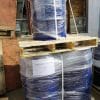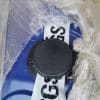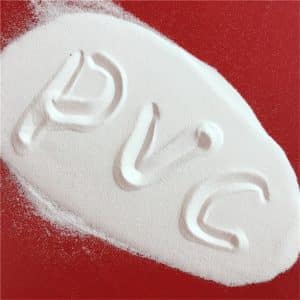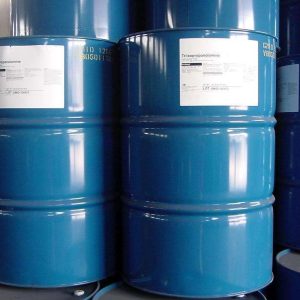Description
Unveiling the Potential of UVR-6103: A Deep Dive into 3,4-Epoxycyclohexylmethyl-3,4 Epoxy Resin
In the world of advanced materials, epoxy resins hold a prominent place, renowned for their exceptional mechanical strength, chemical resistance, and adhesive properties. Among the vast array of epoxy resins, one particular compound, Epoxy Resin 97% (UVR-6103) 3,4-Epoxycyclohexylmethyl-3,4-epoxycyclohexanecarboxylate (often shortened to 3,4-Epoxycyclohexylmethyl-3,4), stands out for its unique characteristics and versatile applications. This article explores the properties and potential uses of this specialized epoxy resin.
Understanding the Chemistry: 3,4-Epoxycyclohexylmethyl-3,4
The chemical name, though a mouthful, provides clues to its special properties. 3,4-Epoxycyclohexylmethyl-3,4 refers to the molecular structure of the resin. It’s an alicyclic epoxy, meaning it has an epoxy group attached to a cyclic (ring-shaped) hydrocarbon structure. Specifically, it contains two epoxy groups (one on each 3,4 carbon) within the cyclohexyl ring system, as well as a carboxylate linkage. This structure imbues the UVR-6103 resin with several key characteristics:
High Reactivity: The presence of two epoxy groups allows for efficient crosslinking during curing, leading to a strong and durable finished product.
Excellent Chemical Resistance: The cycloaliphatic nature contributes to its resistance to a wide range of harsh chemicals and solvents.
Good Thermal Stability: The resin exhibits good stability at elevated temperatures, making it suitable for applications where heat resistance is crucial.
Low Viscosity: This property is particularly advantageous in processing, allowing for easier mixing and application in various manufacturing processes.
UV Curability: Though not explicitly part of the name, the “UVR” designation indicates its suitability for UV curing, a rapid and energy-efficient curing process.
Key Applications of UVR-6103
The combination of its unique properties makes UVR-6103 a preferred choice for a variety of industries and applications:
Advanced Coatings: Its chemical resistance and durability make it ideal for creating high-performance coatings for industrial machinery, automotive parts, and protective coatings for sensitive electronic components. UV curability facilitates fast processing on a production line.
3D Printing: Due to its low viscosity and fast curing time under UV light, the resin is gaining popularity in stereolithography (SLA) and other resin-based 3D printing techniques, allowing for the production of detailed and robust parts.
Adhesives and Sealants: UVR-6103 can be used to formulate high-strength adhesives and sealants, particularly for applications requiring chemical and thermal resistance. This is relevant for industries such as aerospace and automotive.
Encapsulation and Potting: The resin’s electrical insulation properties, coupled with its low viscosity, make it suitable for encapsulating and potting electronic assemblies, protecting them from moisture and mechanical damage.
Composites: UVR-6103 can be incorporated into composite materials to improve strength, durability, and chemical stability. This is beneficial in areas such as aerospace, boat building, and wind energy.
Optical Applications: Its clarity and low yellowing upon curing can make it suitable for certain optical applications where high optical quality is required.
High-Performance Castings: The resin is also suitable for producing high-precision castings for a variety of demanding applications.
Advantages over TraditionalEpoxy Resin 97%
UVR-6103 offers several advantages over more common epoxy resins:
Faster Curing: UV curing capabilities result in significantly faster processing times compared to traditional heat-curing epoxy systems.
Lower VOC Emission: UV curing often involves lower volatile organic compound (VOC) emissions, making it a more environmentally friendly option.
Improved Performance: The cycloaliphatic structure and UV curability often provide superior properties like chemical and weather resistance and lower moisture absorption compared to traditional epoxy systems based on bisphenol A.
Considerations and Future Outlook
While its benefits are numerous, handling UVR-6103 requires care, as with all Epoxy Resin 97% before curing. It is important to follow safety protocols and use proper personal protective equipment (PPE).
The future of UVR-6103 is undoubtedly bright. Ongoing research and development are continuously expanding its application scope and pushing the boundaries of what this exceptional resin can achieve. With increasing demands for high-performance and sustainable materials, 3,4-Epoxycyclohexylmethyl-3,4 is positioned to play a crucial role in various industries for years to come.
Conclusion
Epoxy Resin 97% (UVR-6103) 3,4-Epoxycyclohexylmethyl-3,4-epoxycyclohexanecarboxylate, is a powerful tool in materials science. Its unique chemical structure and properties make it a versatile material with huge potential across diverse applications. As advancements in materials science continue, resins such as UVR-6103 will continue to be vital in the development of high-performance, durable, and advanced products.










Reviews
There are no reviews yet.